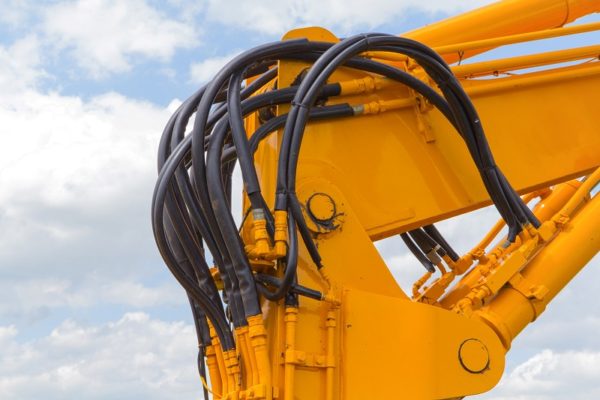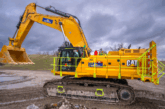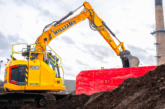
Stay safe when installing, inspecting and replacing hydraulic hoses, urges Jerry Hughes of the British Fluid Power Association.
If hydraulic hoses and connectors are not inspected, maintained and replaced in a responsible fashion, then there will always be the risk of life-changing bodily harm or even death due to such injuries as fluid injection or hose whip.
The following guidance tips are by no means a comprehensive guide to best practice with regard to inspecting, maintaining and replacing hydraulic hose and connectors, but, it is hoped, will provide a useful overview of the type of things to bear in mind and to be aware of from a safety perspective.
Installation
On the subject of hydraulic hose installation as part of a fluid power system, the guidelines under ISO/TS 17165-2:2013 provide invaluable advice for the selection, routing, fabrication, installation, replacement, maintenance and storage of hose and hose assemblies for hydraulic fluid power systems.

For example, it addresses how to put together a hose assembly and install it correctly in order to avoid twisted hoses. This TS standard also looks at how hoses should be correctly rooted and tightened to the right level, and covers other aspects such as inspection frequency, visual inspection, functional tests, age control and storage.
This standard should be fully understood and adhered to because, apart from its relevance concerning the general operational efficiency of the equipment, it can also help to ensure your hydraulic hose installation is installed in a way that minimises any risk of injury.
Inspection and Maintenance
When carrying out inspection tasks, personnel should never put their hand anywhere near a hydraulic hose to check for leakage. People sometimes put their hand on a hose to check whether it is wet, which could indicate that there is a pinhole leak. However, a fluid injection injury could easily be incurred if pressurised fluid from such a leak makes contact with the skin.
It is important always to bear in mind that there are dangers with any equipment kept under pressure. For example, a system that has an accumulator needs to be depressurised before a hydraulic hose is removed before replacement. Naturally, if this is not done, a high-pressure gush of fluid can come out of the system, with the risk of serious injury or death to the personnel carrying out the replacement work.
Replacement
As there are risks involving old or worn hydraulic hoses, there re also risks involved in hose replacement. A large industry has been built up in providing on-site hose replacement, and this type of service can naturally be very convenient way of upgrading your equipment.
However, before anybody is given the authority to build or undertake work on a hydraulic system it is important to ensure the person or persons involved are suitably trained to carry out their designated tasks. They may be properly trained to install or replace hydraulic hoses, but do they have the right knowledge and skills to be given wider access to the hydraulic system, and do they fully understand what that system does?
Pressure Testing Guidance
Some companies buy pre-made up hose assemblies. If considering this option, always insist that these hose assemblies have been pre-pressure tested with an accompanying certificate to prove this has been undertaken and to show the testing conforms to the relevant standards.
In 2012 the BFPA undertook some work in conjunction with the Health & Safety Executive (HSE) on the pressure testing of hydraulic hoses and hydraulic hoses as part of a system. The result was the HSE’s document GS4; a major update of fundamental, cross-industry safety guidance on pressure testing aimed at all employers, supervisors and managers.
The guidance lays down procedures that should be adhered to when undertaking pressure tests.
For example, when looking at the pressure rating of a hose assembly the pressure rating should be set at the minimum level of any component within that assembly; this includes hose adapters.
Too often companies buy unrated hose adapters from a cheap source and forget that they have to rate that adapter within the system. The hose assembly including the hose fitting might be rated at 350 bar but the adapter might be rated at only 250 bar. Therefore, that assembly should only be rated at 250 bar.
Training
The BFPA runs the ‘Foundation Course in Working Safely with Hydraulic Hose and Connectors’; and a practical, workshop-based course titled ‘The BFPA Hose Assembly Skills Training Programme’, which takes the basic Foundation level of knowledge and trains attendees to a fully assessed level of ability in hose assembly techniques; and a ‘Hose Integrity, Inspection and Management’ course.
A number of reputable hose equipment and service providers are licensed to carry out these courses throughout the UK and Ireland. The BFPA has recently produced minimum educational recommendations for hydraulics (pneumatics will follow), which cover a basic understanding of a system together with health & safety guidance.
Reputable Providers
Only trust your hydraulic hose and related equipment to reputable hose equipment providers; whether the providers in question are members of the BFPA Approved Hose Assemblies Scheme or run a reputable scheme of their own. When it comes to hose and fittings, do not accept anything but equipment of a high quality.
After all, when the efficiency of your plant and equipment, as well as the health & safety of your workforce is at stake, only the best product, training and service provision is acceptable.
If a fluid injection or hose whip injury does occur and the company or companies involved are found to have been negligent, there could not just be serious legal consequences for culpable individuals (for example, in line with the Corporate Manslaughter Act); the reputation of the company or companies could also be compromised, with long-term business damage being suffered as a result. Worst of all, of course, is the potentially life-changing or even fatal injury that may have been suffered by the affected party or parties.
For information on BFPA’s training courses click here.








